
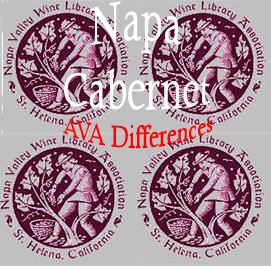
The Napa Valley Wine Library held a roundtable forum of experts to unravel the mystery of how Cabernet Sauvignon differs throughout the sub-AVAs of Napa Valley.
Just What are the AVA Distinctions
of Napa Valley Cabernet?
by
Alan Goldfarb
October 15, 2007
 e all know that in the Napa Valley Cabernet is the cat’s meow, and the cash cow that drives the limo. In the Napa Valley, Cabernet Sauvignon is king. But is a Diamond Mountain District Cabernet different from a Spring Mountain District Cabernet? Or, can one really discern the distinctions – if any, and winemaking style notwithstanding – among the Cabs from let’s say, Rutherford and Stags Leap District?
e all know that in the Napa Valley Cabernet is the cat’s meow, and the cash cow that drives the limo. In the Napa Valley, Cabernet Sauvignon is king. But is a Diamond Mountain District Cabernet different from a Spring Mountain District Cabernet? Or, can one really discern the distinctions – if any, and winemaking style notwithstanding – among the Cabs from let’s say, Rutherford and Stags Leap District?
At a recent all-day seminar sponsored by the venerable Napa Valley Wine Library, vineyardists as well as winemakers discussed the valley’s 14 sub-regions with regard to Cabernet variance.
Conclusion from this reporter’s vantage point: Like the Corsican brothers, or those Lohan and Hilton girls, it’s indeed a daunting task telling the differences among them.
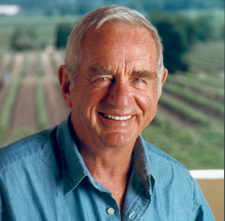
Chateau Montelena’s Jim Barrett.
In my experience with such matters, trying to get a cogent answer about how terroir manifests in a glass of wine is not unlike extracting a lateral incisor from a winemaker. It’s not easy or without pain. In addition to the variables of so many different vineyard practices and gobs of winemaking regimens, to intuit terroir in the glass is to know the earth’s core.
And so it went on this particular Saturday in the southeastern corner of the Napa Valley, not far from the Atlas Peak AVA. Much was said, many wines were tasted, about which there came forth wonderful discussions. But in the end, one went away craving more evidence.
Jim Barrett, the founder of Chateau Montelena in the Calistoga area – the latter of which is undergoing
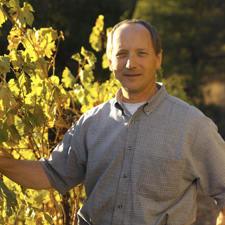
Cain Winery winemaker Chris Howell.
“The land has been here but then along came the pioneers and they started to put the hand of man on it …”
But if the curmudgeonly Barrett informed the mood, vineyard manager and winemaker Doug Hill of Hill Family Estate put the subject into perspective.
When asked by Chris Howell, winemaker at Cain Winery (who later on his own panel had difficulty identifying terroir differences), “Are we concerned that (wine producers) might be overwhelming terroir?”
Hill demurred: “I’d much prefer to talk about my Merlot because our Merlot is definitely an expression of our terroir (in Yountville),” said Hill, who was asked instead, to present his Cabernet in a discussion of terroir ‘in the vineyard.’”
But Hill then responded to Cain’s poignant query that got to the heart of things: “You really get vineyard character if you pick a little less ripe … Certainly we can over-design and over-farm if we use the tools that we have (improperly). One of the best ways to lose terroir is the square-peg-in-the-round-hole (adage). We have to be conscious of where we’re farming.”
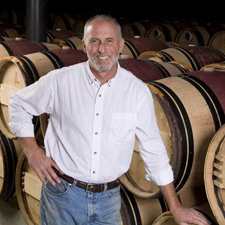
Harlan Estate’s Bob Levy
[Photo by Robert M. Bruno]
To which Levy succinctly rejoindered under a few gasps and chuckles from the audience, “It’s quite the opposite. As we wait, I think we get better expressions of site.”
When this reporter followed up with: “How does that happen?” Levy parried rather obtusely, “I can only assume it has to do with the utilization of the energy within the plant.”
Levy, like Jim Barrett before him, is a believer in the hand of humans in creating terroir. While there’s the school of terroir that defines it only as all the natural elements that go into growing a wine grape, there are those – such as Levy – who believe that human influence should also be counted.
“When I think of terroir versus vinification, the character of the wine expresses the terroir, not just the dirt but the people and all the decisions made,” stated Levy unequivocally. “You have character and you have style. Our vinification practices (for all Harlan wines) are not recipes, but comparable.”
Levy also blends wines for Harlan’s Bond brand and he does so across three areas of Oakville, each of which he says, has its own distinctiveness. Mike Wolf, who farms in Oakville for his eponymous vineyard management company, intimated that because the region has such diverse soils, perhaps the AVA should be divided. But in this climate of TTB crackdown, there isn’t a chance of that happening in our lifetimes.
Nonetheless, Wolf declared that in Oakville, the soil profiles “may be as extreme as anywhere in the valley. You can see it visually. Just look at the hills on the west side of the valley where it’s forest. On the eastside, it’s red soils (and more bare and rocky.) There are also temperature influences from one side to the other.”
Wolf went further, stating that the Napa River, which runs down the geographic center of the area, should not always be the defining influence. “It’s not always the river,” he said. “Wouldn’t it be interesting if Opus One (which is close to the river east of Highway 29) and Robert Mondavi Winery (across the road on the west side) were in two different AVAs? The highway (also) is not the dividing line.
“In Oakville, you can make an argument that there are three things going on that’s quite different and discernible (temperature, soils, location).”
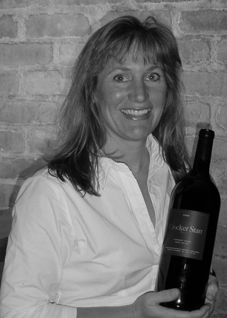
Crocker & Starr’s Pam Starr.










 READER FEEDBACK: To post your comments on this story,
READER FEEDBACK: To post your comments on this story,



